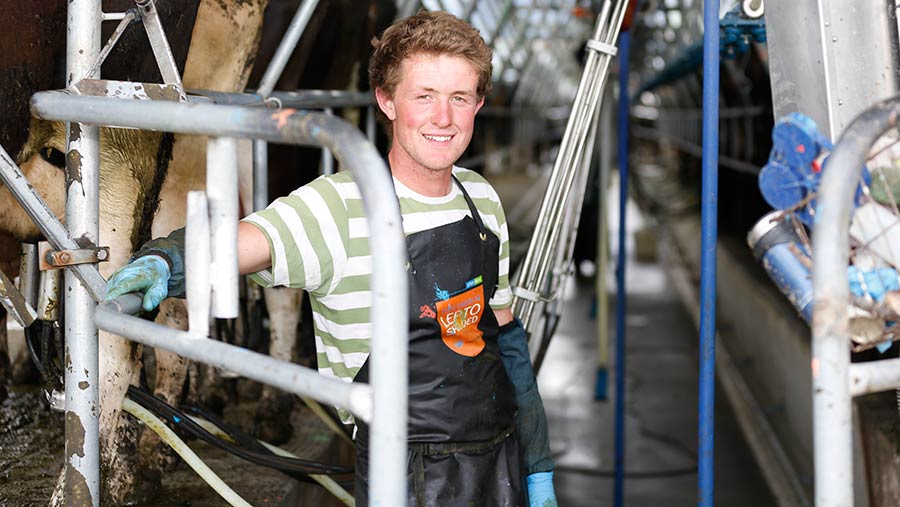Farmer Focus: Simple techniques ease colostrum management post-calving
 © John Eveson
© John Eveson Ten days after the official start date, calving is now well under way, with half the herd on course to have calved by day 14.
So far it has all gone relatively smoothly, with the only minor grumble being the never-ending supply of bulls calves.
Nevertheless, with five more weeks of dairy calves due, there’s still plenty of time for the boy/girl ratio to hopefully swing back in our favour. It makes it tempting to try using some sexed semen, although the lower conception rates make this risky in a block-calving system.
See also: More from our other livestock farmer focus writers
A great idea we picked up from our local discussion group has been keeping colostrum from the first milking post-calving in four-pint supermarket bottles.
It has meant we have been able to largely eliminate any disease risks associated with pooling colostrum, and has made the task of feeding newborn calves much easier – simply immerse the bottle in a bucket of hot water, and by the time you have reached the calf shed it is warmed up and ready to go.
Interestingly, we have had lots of cows calving a week to 10 days before their due date (having only had one AI service, and without any escaping bulls).
Evidently some of the shorter gestation-length bulls we’ve used have had the desired effect, and although it is making the colostrum herd slightly more difficult to manage, it is definitely helping to condense our calving spread.
On 25 February the milkers went back out to grass – almost three months to the day after housing them for winter.
As yet, it has only once meant fetching them in during a snow shower, and ground conditions are holding up well.
Pasture quality also appears to be good, with the first grass sample of the season testing at 27% protein, 20% dry matter and 12.5 ME.
However, while the quality is there, the quantity perhaps isn’t. Nevertheless, we will stick to our spring rotation planner and only give the cows their allocated hectares each day, buffer feeding with cake and grass silage as required.
Fingers crossed global warming does its bit to deliver the warmest March since records began.
George Brown
George won the Farmers Weekly Apprentice in 2012. After a stint working on dairy farms in New Zealand, he has returned to the UK and is now managing the 330-cow dairy herd at Cairnhead Farm on behalf of Robert Craig.
